Editor's note: Pursuant to Official Dispatch No. 1709-CV/BTGTU dated August 12, 2024 of the Cao Bang Provincial Party Committee's Propaganda Department and Official Dispatch No. 1534-CV/BTGTU dated August 20, 2024 of the Hung Yen Provincial Party Committee's Propaganda Department, Hung Yen Newspaper published the Propaganda Outline of the 8th International Conference of the UNESCO Global Geoparks Network in the Asia- Pacific Region in 2024 in Cao Bang.
I- THEME, SCALE, SIGNIFICANCE OF THE CONFERENCE
The Conference of the UNESCO Global Geopark Network (GGP) in the Asia-Pacific region is held every two years in countries in the Asia-Pacific region with the aim of sharing and exchanging experiences, effective models, and useful solutions in the work of building and developing the title of GGP according to UNESCO criteria among members of the UNESCO Global Geopark Network in the Asia-Pacific region; raising awareness and responsibility of all levels, sectors and ethnic groups in preserving and promoting the values of heritage types for sustainable tourism development.
The 8th International Conference of the UNESCO Global Geoparks Network in Asia-Pacific (hereinafter referred to as the Conference) with the theme: "Local communities and sustainable development in Geopark areas", was held in Cao Bang from September 5 to September 15, 2024, with about 800 - 1,000 domestic and international delegates attending. The People's Committee of Cao Bang province coordinated with the Vietnam National Commission for UNESCO and the Ministry of Foreign Affairs to chair the Conference.
The conference is an opportunity for Cao Bang province to learn and share experiences in building and promoting the value of the Geopark model with countries around the world; an opportunity to promote and advertise the image of Cao Bang tourism, the tourism potential of the land and people of Cao Bang to domestic delegates, especially international delegates, contributing to the successful implementation of the goals and aspirations of creating a Cao Bang tourism brand, concretizing the Resolutions of the Central Committee, the Action Programs of the province, opening up many new opportunities for Cao Bang tourism, contributing to effectively implementing the breakthrough tasks for the local tourism industry, gradually moving towards making tourism a spearhead economic sector.
II- ACTIVITIES WITHIN THE CONFERENCE
1. Before the opening of the Conference
(1) From September 8 to 9, 2024, the UNESCO Global Geopark Council meetings will take place. Content: Discussing the activities of the UNESCO Global Geopark Network, evaluating appraisal and re-appraisal dossiers.
(2) On September 10, 2024, the Global Geopark Network Executive Board (GGN ExB) meeting took place. Content: Discuss and evaluate the progress of implementing activities of the Global Geopark Network in 2024; discuss, develop directions, reach consensus, and make decisions related to the activities of the Network.
(3) September 11, 2024
- Meetings and working sessions between Cao Bang province and the Council and Executive Board of the UNESCO Global Geopark Network; representatives of the United Nations, UNESCO and the UNESCO Office in Hanoi; Embassies of other countries. Content: Preliminary contents of some contents that the Geopark Council has implemented when coming to Cao Bang; introduction of the economic and tourism development potential of Cao Bang and the possibility of cooperation with other countries.
- Meeting of the Advisory Board of the UNESCO Global Geopark Network in Asia - Pacific Region (APGN AC). Content: Exchange and assessment of the progress of implementing activities of the UNESCO Global Geopark Network in Asia - Pacific Region related to the fields of heritage conservation and promotion, management and operation of UNESCO Global Geoparks, education and community, action plan for the period 2022 - 2024, orientation of exchange and cooperation activities in the Network for the period 2024 - 2026, countries running to host the 9th International Conference of the Global Geopark Network in Asia - Pacific Region in 2026 presenting candidate profiles...
- Meeting of the Coordinating Board of the UNESCO Global Geopark Network in Asia - Pacific (APGN CC). Contents: (1) Report on the results of the activities of the Asia - Pacific Regional Network, Geoparks of countries in the region in the period of 2022 - 2024 and the first 9 months of 2024; exchange and unify activities, initiatives, and implement the direction of the Network's activities; preliminary announcement on the results of the selection of the country to host the 9th International Conference of the UNESCO Global Geopark Network in Asia - Pacific in 2026. (2) Election of the Coordinating Board of the UNESCO Global Geopark Network in Asia - Pacific in 2024 - 2026.
- Celebration of the 20th anniversary of the establishment of the Global Geopark Network (2004 - 2024). Content: Reviewing the tradition, process of building and developing the Global Geopark Network over 20 years in performing the tasks of preserving, conserving and promoting types of geological heritage, biodiversity, natural landscapes, tangible and intangible culture, environmental protection activities, for community development and sustainable development; enhancing the spirit of solidarity among Network members in implementing the common goals of the UNESCO Global Geopark; promoting the image of the UNESCO Global Geopark.
2. Opening of the Conference and thematic workshops
(1) Morning of September 12, 2024: Opening of the Conference at the Cao Bang Provincial Convention Center. Immediately after the Opening Ceremony is the ribbon-cutting ceremony to inaugurate the exhibition, display and promotion space.
(2) The plenary session of the Geoparks was held on September 12, 2024. Content: Strengthening exchange, connection and cooperation activities among members of the Network; exchanging and sharing experiences, initiatives and effective models in the work of building and promoting the Geopark model.
(3) Thematic workshops will be held on the afternoon of September 12, September 13 and the morning of September 15, 2024.
Delegates attending the Conference presented reports and shared experiences in the work of building and developing, promoting the value of the Geopark model, preserving, conserving and promoting types of geological heritage, biodiversity, natural landscapes, tangible and intangible culture, environmental protection activities, associated with tourism development activities, for community development and sustainable development.
The Workshop sessions have 6 topics: (1) Indigenous knowledge and participation of local communities in developing Geoparks; (2) Mitigating risks of natural disasters, geological disasters and adapting to climate change; (3) Investigating, evaluating, preserving and sustainably promoting the values of heritage types; (4) Geoparks with sustainable development goals; (5) Propagating, promoting, educating and raising public awareness in Geoparks; (6) Difficulties and challenges in areas that want to become Geoparks.
Each workshop will have 02 experts in charge (experts in specialized fields, members of the Executive Board of the Global Geopark Network, Asia-Pacific Network).
(4) On the afternoon of September 15, 2024, the Conference closed at the Cao Bang Provincial Conference Center. Content: Review and summary of the Conference organization; art performance program and flag handover ceremony for the host unit of the 9th APGN Conference in 2026.
3. Activities taking place in parallel and on the sidelines of the Conference
(1) International workshop on promoting the value of UNESCO titles in Vietnam to serve sustainable development. Time: September 11, 2024. Content: Sharing experiences in building, developing, managing, and promoting UNESCO titles to serve sustainable development in Vietnam,...
(2) Annual conference of the Vietnam Global Geoparks Expert Subcommittee. Time: September 12, 2024. Content: Summarize the activities of the Subcommittee, the Geoparks in the Vietnam Geoparks Network, share difficulties and challenges in the work of building, managing and developing Geoparks in Vietnam.
(3) Exchange activities, signing of cooperation memorandums between the Geoparks in the UNESCO Global Geopark Network in the Asia-Pacific region and a number of other conference, seminar and cooperation exchange activities. Time: During the conference, according to the registration of the Geoparks.
(4) Experience program of Cao Bang Non Nuoc Geopark tourist routes. Conference delegates register to choose 1 of 2 tour routes: (1) Tour route "Experience indigenous culture in the fairyland": Unique mature and old karst landscape with majestic scenery, charming mountains and rivers, famous scenic spots Ban Gioc waterfall, Nguom Ngao cave, Mat Than Nui (Trung Khanh district), Thang Hen lake (Quang Hoa district),...; traditional craft villages such as Phuc Sen blacksmith village, Phia Thap incense village, Dia Tren paper making village (Quang Hoa district),...; discover traditional identities of ethnic groups through folk festivals: Quang Uyen town's Cannon Head Painting Festival; Thanh Minh festival; Long Tong festival; Nang Hai festival...; experience peaceful life with ancient villages, enjoy Then singing and Tinh lute, cuisine with the flavor of the mountains and forests. (2) Tour route "Discovering Phja Oac - the mountain of changes": Visit the special national relic of Tran Hung Dao forest, Nguyen Binh district associated with the establishment of the Vietnam Propaganda Liberation Army on December 22, 1944, the predecessor of the Vietnam People's Army; this is also the place associated with the life and revolutionary career of General Vo Nguyen Giap - an excellent student of President Ho Chi Minh; admire the impressive limestone mountain landscape with dragon back landscape, Phja Oac - Phja Den national park with many rare minerals such as granite, tungsten..., diverse and rich flora and fauna; learn about traces of the marine environment through ancient corals found in Lang Mon commune, Nguyen Binh district...
(5) Exhibition, display and promotion space
Taking place from September 12 to September 15, 2024 at the Cao Bang Provincial Convention Center, square km5, De Tham ward, Cao Bang city. Content: Exhibition of beautiful photos of Cao Bang, booths promoting and introducing global geoparks and the potential of the Network, booth of the "Discovering Geoparks with Me" Cao Bang Geopark Club; Ethnic cultural space in the Cao Bang Geopark area; Display area introducing electric vehicles of Vinfast Company; Exhibition displaying OCOP products (inside and outside the province), products of the Geopark Partner Network (with the Geopark logo);...
(6) Cultural, sports and artistic activities at Kim Dong Walking Street.
Time: September 13 - 14, 2024. Content: Organizing cultural activities, photo exhibitions, arts and sports for delegates attending the Conference to experience.
III- SOME INTRODUCTION ABOUT CAO BANG - THE CONFERENCE HOSTING VENUE
Located in the Northeast region of the country, Cao Bang has an important position in terms of national defense - security and economic development, foreign affairs; has a rich history, culture, many famous landscapes - considered as the "green pearl" of the Northeast region of Vietnam - a place where the typical factors and advantages for sustainable tourism development converge. Non Nuoc Cao Bang Geopark is recognized by UNESCO as the 5th global geopark in Southeast Asia and the 2nd in Vietnam.
1. Geographical features, natural conditions
Mountainous terrain accounts for more than 90% of the province's area with the characteristic of hills and mountains, gradually decreasing from about 1,500 - 2,000m in the West - Northwest to about 200m in the East - Southeast. The terrain features are complex, diverse, with a large degree of dissection, and can be divided into 3 main types of terrain:
- Karst terrain, covering most of the eastern districts of the province such as Ha Quang, Trung Khanh, Ha Lang, Quang Hoa and some areas in the North of Thach An district, the Southeast of Bao Lac district, the Northeast of Nguyen Binh district...
- High mountainous terrain, mainly found in the western districts of the province such as Nguyen Binh, Bao Lac, Thach An and a part of the south of Hoa An district. Typical of these are the high mountain systems in the northwest - southeast of Bao Lac, Nguyen Binh (including many mountain ranges stretching from the southwest of Bao Lac district to the southwest of Nguyen Binh district with the peaks of Phja Da (Bao Lac district) at 1,980m asl, Phja Oac (Nguyen Binh district) at 1,931m asl, Phja Den (Nguyen Binh district) at 1,428m asl and Ngan Son - Thach An (the Ngan Son arc, including mountain ranges stretching from the north - northwest of Ngan Son district (Bac Kan) through Ngan Son town, Bang Khau in the west - northwest direction to Thach An district and then turning to the west - southwest of Lang Son province).
- Lowland hilly terrain, river valleys, distributed interspersed with the above-mentioned terrain types with diverse sizes and shapes. Most notably, the Cao Bang depression is up to 7 - 8km wide, extending up to 30km in the Northwest - Southeast direction near the center of the province, almost dividing Cao Bang into two halves, the East (karst) and the West (non-karst) as described above.
The characteristics of the highland continental monsoon tropical climate, compared to other northeastern mountainous provinces, also have a subtropical climate sub-region. The above mentioned climate and terrain characteristics create many special climate sub-regions for Cao Bang, making this land have a very high biodiversity and ecosystem, forming areas producing rich and diverse specialty plants and animals such as chestnuts, seedless persimmons, high-protein soybeans, sugarcane, tobacco, bitter tea...
The system of rivers, streams and lakes is rich and diverse. The streams originate from the high mountainous areas in the North and Northeast bordering China such as Phja Da mountain (Bao Lac district), Phja Oac mountain (Nguyen Binh district), mainly in the Northwest - Southeast and North - South direction. There are up to 1,200 large and small rivers and streams belonging to 5 main river systems: Bang river, Hien river, Gam river, Bac Vong river and Quay Son river. The water flow of rivers and streams is unstable, often changing with the seasons. The surface water and underground water resources of Cao Bang have relatively good reserves and quality...
2. Culture, history
Cao Bang is a land with a rich history and culture, with the identity of a land of thousands of years of civilization, with late Paleolithic sites such as Thuong Ha (Bao Lac district), Bo Ma (Hung Dao, Cao Bang city)... Neolithic sites in Nguom Boc (Hoa An district), Nguom Vai, Nguom Cang, Nguom Slan (Ha Quang district), Bronze Age sites with bronze drums, bronze axes, bronze spears, ceramics... of the Dong Son culture found in most districts in the province.
Cao Bang is famous for many outstanding figures, recorded in legends, fairy tales, unofficial history, official history or folk anecdotes, such as Nung Tri Cao, Hoang Luc against the Song army; Hoang Thang Hua against the Yuan army; Be Khac Thieu, Nong Dac Thai against the Ming army; Luong Tuan Tu, Ma Quoc Anh against the French colonialists... The legend of Thach Sanh... In daily life, Cao Bang produced many cultural figures such as Nong Quynh Van, who was honored as King Ca Dang; Be Van Phung, who was appointed to the position of Tu Thien Quan Nhac; the Imperial Historian of Cao Bang, Be Huu Cung, author of the book Cao Bang Thuc Luc; the Tay poet Hoang Duc Hau...
On January 28, 1941, after 30 years of wandering abroad to find a way to save the country, President Ho Chi Minh returned to the Fatherland through landmark 108 (now national landmark 675) in Truong Ha commune, Ha Quang district; built a base, and directly led the Vietnamese revolution. Cao Bang became the homeland of the Vietnamese revolution.
Cao Bang is a long-standing land of many ethnic groups such as Tay, Nung, Mong, Dao, San Chi, Lo Lo,... in which ethnic minorities account for 95.3% of the population. Each ethnic group has its own customs and practices with very unique and rich cultural activities, creating cultural harmony between ethnic groups, forming a multi-ethnic culture and imbued with the identity of Cao Bang with many traditional cultural heritages...
There are currently 271 relics in the province, of which 102 have been ranked, including 03 special national relics (Pac Bo Special National Relic Site (Ha Quang district) - associated with the great revolutionary life of President Ho Chi Minh and the Party Central Committee in the period of 1941 - 1945; Tran Hung Dao Forest Special National Relic Site (Nguyen Binh district) - where the Vietnam Propaganda Liberation Army, the predecessor of the Vietnam People's Army, was established; Special National Relic Site of the 1950 Border Victory (Thach An district) - where President Ho Chi Minh directly went to the front for the first and only time to observe and direct the Campaign), 27 national relics, 72 provincial relics, 02 national treasures (Pair of bells of Vien Minh Pagoda and Quan Trieu Temple, Hung Dao commune, Cao Bang city; Royal stele of King Le Thai To, Hoa Binh district). An).
More than 2,000 intangible cultural heritages exist in Cao Bang province, including: 06 heritages of spoken and written languages; 150 heritages of folk literature; 745 heritages of social customs and beliefs; 200 heritages of traditional festivals; 112 heritages of traditional crafts; 487 heritages of folk knowledge; 300 heritages of folk performing arts. There are 7 heritages included in the list of national intangible cultural heritages; in particular, the heritage "Then practice of the Tay, Nung, Thai people in Vietnam" (including the Then ritual of the Tay people in Cao Bang) was recognized by UNESCO as a representative intangible cultural heritage of humanity.
Festivals in Cao Bang are rich, diverse, and imbued with national cultural identity. In addition to temple and pagoda festivals at the beginning of each new year, there are traditional folk festivals such as: Long Tong festival of the Tay and Nung people; Cannon shooting festival of Quang Uyen town (Quang Hoa district) and Dong Khe town (Thach An district); Nang Hai festival of the Tay people in Tien Thanh commune (Quang Hoa district) and Kim Dong commune (Thach An district); Thanh Minh festival of the Nung An people in Phuc Sen commune (Quang Hoa district)... These traditional cultural festivals express beliefs in beliefs, religions, and gratitude to previous generations; contributing to motivating and encouraging people of all walks of life to perform noble deeds and build great national unity.
Some community tourism spots in Cao Bang province have been put into effective operation, attracting many tourists to visit and experience, such as: Khuoi Ky ancient stone village, Dam Thuy commune (Trung Khanh district); Khuoi Khon hamlet, Kim Cuc commune (Bao Lac district); Hoai Khao hamlet, Quang Thanh commune (Nguyen Binh district); Giuong village, Tien Thanh commune (Quang Hoa district); Pac Rang hamlet blacksmith village, Phja Thap hamlet incense making village, Phuc Sen commune (Quang Hoa district).
With the advantage of climate and soil typical of the Northeast mountainous region, Cao Bang has formed areas for growing specialty crops such as: Phja Den vermicelli (Nguyen Binh district), pear and black jelly (Thach An district), chestnut and white jelly Mac Pup (Trung Khanh district), Gynostemma pentaphyllum tea, red polygonum multiflorum. Cao Bang is famous as a culinary paradise with recognized products: Dong Khe pear (Thach An district) entered the Top 50 most famous fruits in Vietnam in 2012; Cao Bang Coong Phu cake entered the Top 50 famous Vietnamese specialties in 2015; sticky rice with canarium, Coong Phu cake, chestnuts entered the Top 100 famous Vietnamese specialties in February 2021; rolled rice cake, ap chao cake entered the Top Vietnamese specialties (2021 - 2022); Che Lam cake, Phja Den vermicelli are in the Top 100 Vietnamese specialty gifts (2021-2022)... along with many other titles.
3. Famous landscapes
Cao Bang is favored by nature, adorned with landscapes that are likened to "fairyland" that captivate people's hearts such as: Ban Gioc waterfall, Nguom Ngao cave, Mat Than Nui, Phong Nam - Ngoc Con landscape (Trung Khanh district); Thang Hen lake complex (Quang Hoa district)... in which, there are outstanding values in terms of ecosystem, with the presence of many rare species such as: Cao Vit gibbon conservation area (Trung Khanh district), Phja Oac - Phja Den National Park (Nguyen Binh district) with mossy forests and biodiversity with over 90 species of plants and 58 rare species of animals...
Typically, Ban Gioc waterfall has been honored by world news agencies and newspapers as one of the four largest waterfalls on the border between countries; the largest natural waterfall in Southeast Asia; Russia's Sputnik Agency rated it as one of the most beautiful waterfalls in the world; Touropia Magazine voted it as one of the 10 most magnificent waterfalls in the world; British news agency Fox News voted it as one of the top 7 most majestic waterfalls in the world; National Geographic Magazine (of the American Geographical Association) voted it as one of the top 7 natural wonders in Asia.
Recently, on the world's leading online travel platform Booking.com in the Traveller Review Awards, Cao Bang is one of the 10 friendliest destinations in Vietnam 2024.
4. Non Nuoc Cao Bang UNESCO Global Geopark
Cao Bang is the second locality in the country to receive the title of Global Geopark recognized by the UNESCO Council in April 2018. Insider newspaper voted Non Nuoc Cao Bang UNESCO Global Geopark as one of the 50 locations with the most spectacular views, the most prominent among the wonders and attractive natural landscapes around the world.
Non Nuoc Cao Bang UNESCO Global Geopark converges more than 200 unique heritage sites, reflecting the Earth's 500 million-year history, including the entire area of Cao Bang city and the districts of Quang Hoa, Trung Khanh, Ha Lang and part of the area of Ha Quang, Hoa An, Nguyen Binh, Thach An districts, with an area of more than 3,683 km² and four "experience routes":
Route 1: Northern cluster tourist route "Journey to the origin": This is the Northern cluster tourist route, focusing on Hoa An and Ha Quang districts - a land with many cultural and historical heritage values representing the tradition of fighting to defend the country and protect the independence and freedom of the nation. The highlight of this route is the Pac Bo National Special Relic Site with the imprints of President Ho Chi Minh's revolutionary activities from 1941 - 1944; Kim Dong Historical Relic Site; ammonite fossils (the most highly evolved group of molluscs, 66 million years ago), which are valuable in determining the age of the rock layers containing them and determining geological faults. Ammonite fossils were chosen for the logo of Non Nuoc Cao Bang Geopark, as a symbol representing the science of two typical geological structures of young karst and old karst, and also a symbol of the unique cultural values of Cao Bang.
Route 2: Western cluster tourist route "Discovering Phia Oac - the mountain of changes": This is a Western cluster tourist route, concentrated in Nguyen Binh district with 16 attractions. The highlight of this route is the Phja Oac - Phja Den eco-tourism area, in which Phja Oac temple is 1,931m high. In terms of geology, this place has a mix of terrigenous rocks, limestone and granite intrusive rocks, creating ranges of soil and rocky mountains. In the past, the French chose Phja Oac - Phja Den as a resort, and there are still traces of villas and rest houses of French officials. Phja Oac - Phja Den National Park is also famous for its biodiversity values and many ecosystems, endemic species of animals and plants, many of which are listed in the Vietnam Red Book such as nghien, cypress, chan ga, seven-leaf one-flower, cao vit gibbon, red-faced monkey, king cobra... The forest here still retains many pristine features, of which the characteristic are dwarf forests.
Route 3: Eastern cluster tourist route "Experience indigenous culture in the land of fairyland": This is the Eastern tourist route focusing on Quang Uyen, Trung Khanh and Ha Lang districts. The highlight of this route is Ban Gioc waterfall (Trung Khanh), known as one of the 4 largest and most beautiful waterfalls in the world (among the waterfalls located on the border between the two countries), and is the center of Non Nuoc Cao Bang Global Geopark, which still retains its pristine beauty and core geological and indigenous cultural values; large caves with beautiful stalactites that are among the best in Vietnam such as Nguom Ngao cave (Trung Khanh district), Doi cave (Ha Lang district)... or the Thang Hen underground lake - river and cave complex (Trung Khanh district).
Route 4: "A Time of Fire and Flowers" tourist route: This route extends through Cao Bang city, Quang Hoa and Thach An districts - associated with the legend of Route 4; the heroic sacrifice of generations of fathers and brothers in the resistance war against the French colonialists. The highlight of this route is Bao Dong mountain - the place marking the first and only time President Ho Chi Minh directly went to the front to monitor and direct the battle at Dong Khe stronghold - the opening battle of the Border Campaign in 1950.
5. Border tourism
Not only possessing many attractive tourism resources, Cao Bang province also has a border of more than 333 km with many pairs of border gates (bilateral border gates, secondary border gates); many openings and pairs of border markets, making Cao Bang a bridge for import, export, tourism and service trade between Vietnam and China. In 2023, Cao Bang province will coordinate with the Guangxi Zhuang Autonomous Region (China) to organize the ceremony to upgrade/recognize the Tra Linh (Vietnam) - Long Bang (China) international border gate. In particular, on September 15, 2023, the Pilot Operation Ceremony for tourists to travel between Ban Gioc Waterfall Landscape Area (Vietnam) - Duc Thien (China) was held, Cao Bang became the first province in the country to deploy the model of international tourism cooperation in the field, with the expectation that Ban Gioc Waterfall Landscape Area (Duc Thien) is a typical model of green tourism cooperation, sustainable tourism, this is also a wonder that promises a potential destination, a key tourist area of Vietnam in the coming time.
6. Orientation and solutions for tourism development in the coming time
Resolution of the 19th Congress of the Cao Bang Provincial Party Committee, term 2020 - 2025, determined: Gradually turn Cao Bang tourism into a spearhead economic sector, build Cao Bang province into a tourism center of the provinces in the midland and mountainous regions of the North. Strive to welcome over 5 million tourists by 2025; total tourism revenue reaches over 3,000 billion VND. Strive for Ban Gioc Waterfall Tourist Area to meet the criteria to become a National Tourist Area. In the coming time, the province will synchronously implement the following solutions:
Firstly, mobilize resources to carry out breakthrough tasks and remove bottlenecks and bottlenecks to maximize the province's main advantages. Focus on completing the Dong Dang (Lang Son) - Tra Linh (Cao Bang) expressway by 2025. Pay attention to investing in developing a system of restaurants, accommodation facilities, and tourism services to meet the increasing needs of tourists.
Second, attract and support strategic investors, build infrastructure for the province's areas and points in a synchronous and multifunctional direction. Exploit and maximize the effectiveness of the UNESCO Global Geopark title Non nuoc Cao Bang, 3 special national relics, and national scenic spots. Pay attention to the conservation of cultural heritage, protection of natural resources, and environmental landscapes associated with sustainable tourism development of the locality, and build the province's tourism brand. In particular, well prepare for the 8th International Conference of the UNESCO Global Geopark Network in the Asia-Pacific region in 2024, taking place in September 2024.
Third, effectively implement the Plan to implement the Agreement on Cooperation in Protection and Exploitation of Ban Gioc Waterfall Tourism Resources (Vietnam) - Detian (China), aiming to build Ban Gioc Waterfall Tourist Area into a key tourist area, a model of cross-border tourism, green tourism, and smart tourism.
Fourth, focus on human resource training, improve the professionalism of the tourism workforce. Improve the quality of tourism human resource training, actively advise on adding tourism training programs to the province's training facilities, aiming to establish tourism human resource training facilities for Cao Bang province and the northern mountainous region.
Fifth, promote tourism in many forms, focusing on the application of information technology, propaganda, and advertising in the press and digital platforms. Strengthen tourism promotion and linkage activities, coordinate the development and exploitation of tours, routes, and local and inter-regional tourism products. Develop and promulgate mechanisms and policies to encourage and support tourism development, especially policies to attract investment, community tourism, and eco-tourism.
COMMUNICATIONS SUBCOMMITTEE -
8th Conference of the Parks Network
UNESCO Global Geology Asia Region -
Pacific Ocean 2024 in Cao Bang
Source: https://baohungyen.vn/de-cuong-tuyen-truyen-hoi-nghi-quoc-te-lan-thu-8-cua-mang-luoi-cong-vien-dia-chat-toan-cau-unesco-kh-3174778.html








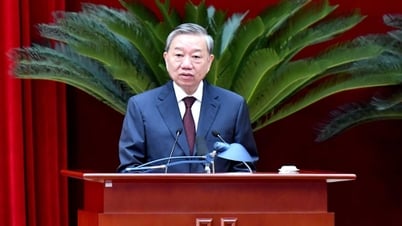


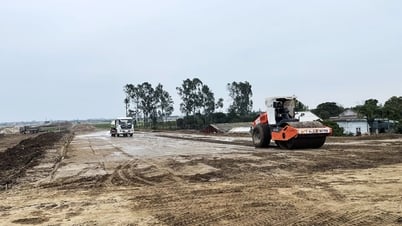


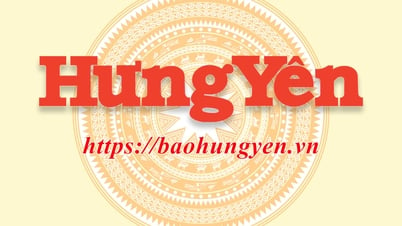



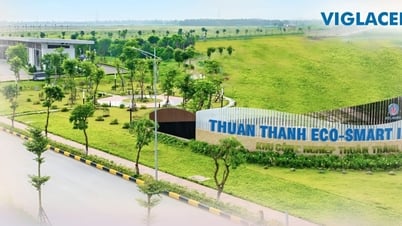
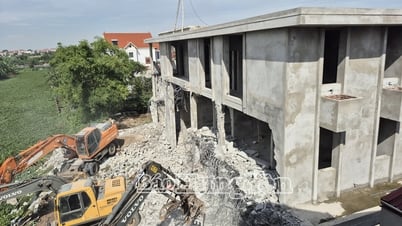
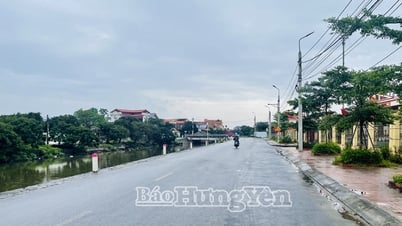






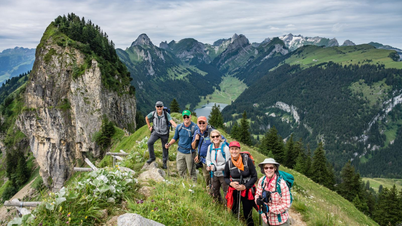
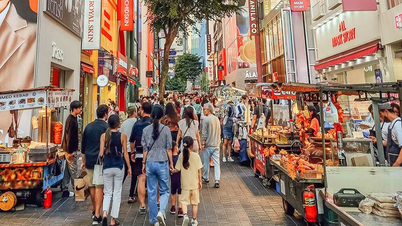
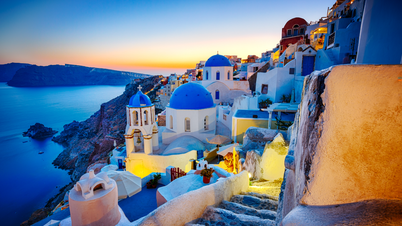
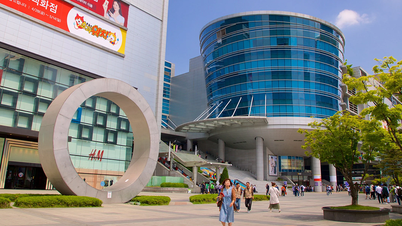
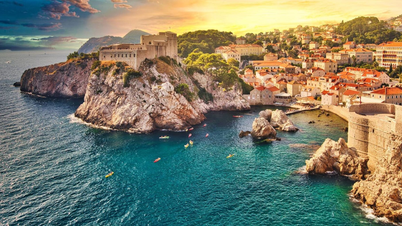


















































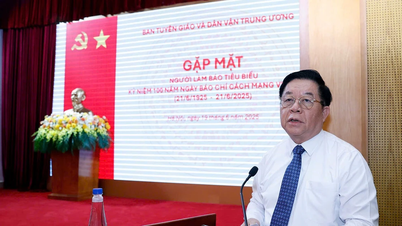

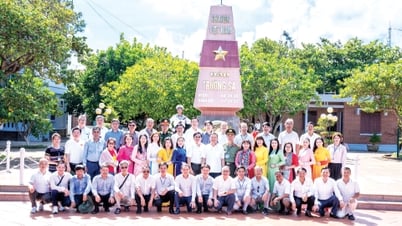



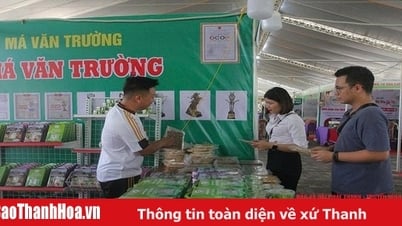












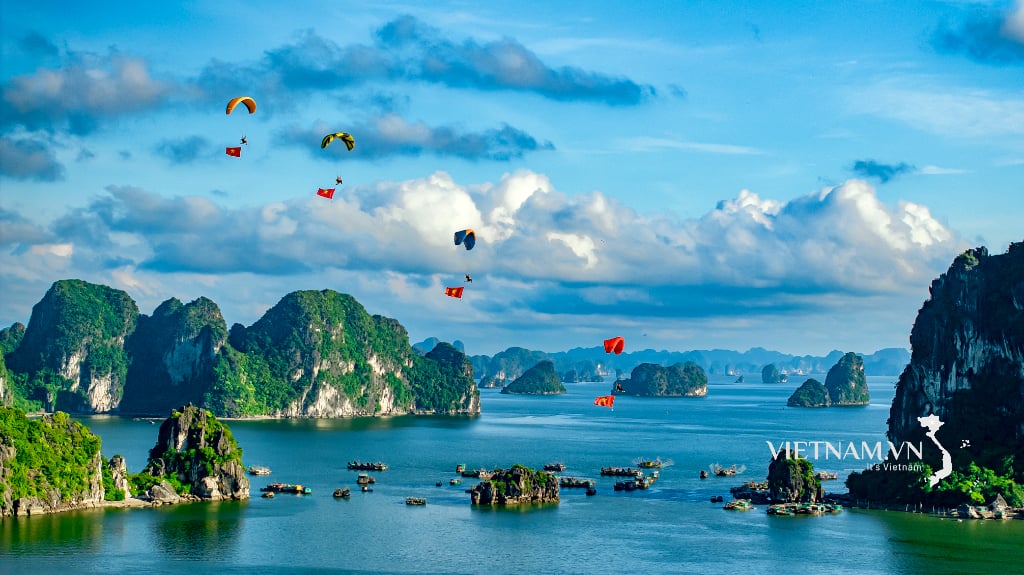
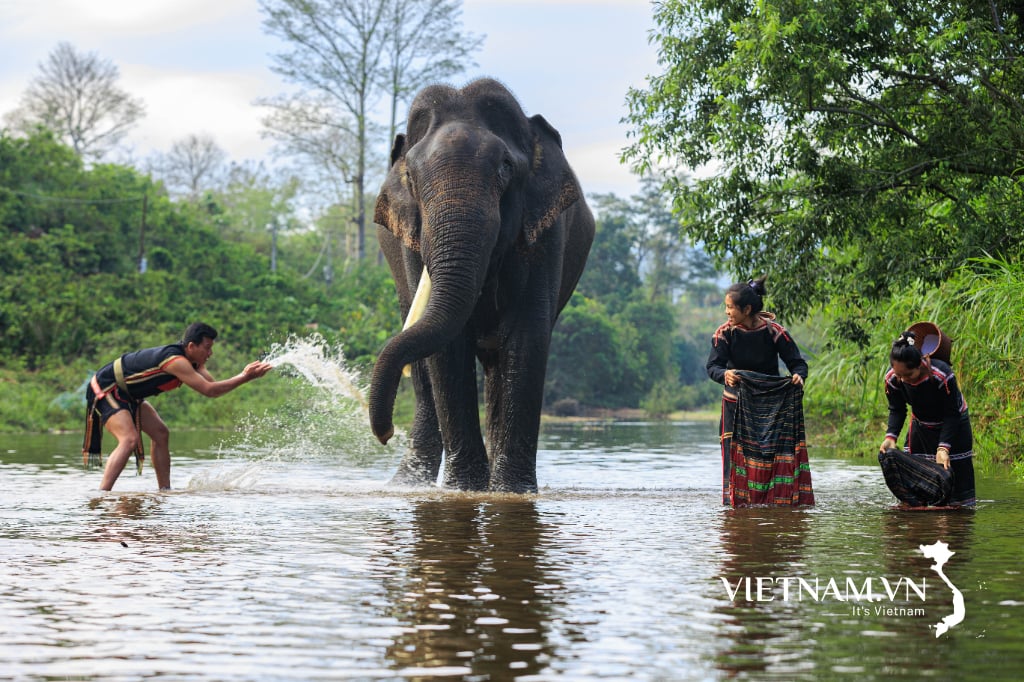


Comment (0)